Over the last few years, experiential events have soared, creating a new avenue for event managers.
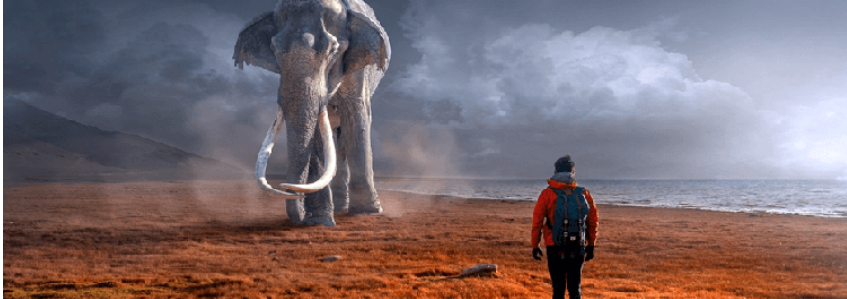
Event marketing for brands used to revolve around conferences, tradeshows, exhibitions, and shows, whereas with experiential events, event attendees can now experience a 4x4 ride through the muddy forests to promote the new Mercedes, slide through a shopping centre to experience how ‘fast and fun’ the new Windows 8 is, pretend to be Joey & Chandler at FriendsFest or give out Carlsberg beer in baubles to celebrate the festive season.
The Rise of Experiential Marketing at Events
Live events are nothing new, however experiential events exist to enhance them, incorporating new technologies and storytelling to immerse the audience in an interactive experience to excite and encourage brand loyalty and sales.
In a multisensory world, our senses are the foundation of our experiences – they are vivid, rich and immediate.
The more senses we recognise, the more our brains are activated, which in turn makes the experience more memorable.
For example, a study found that people can remember around 50% of images after three months; however they can remember 65% of smells after a year.
By creating interactive events that emulate a brand’s personality; customers’ senses are awakened, which brings a new way of thinking, feeling and behaviour to create an effective and engaging experience.
Companies can take advantage of the new sciences of senses to impact feelings, triggering customers’ imaginations and the impression of your brand.
There are several strategies brands can use to create successful experiential events:
- Creating senses: Stimulate the senses to build emotional relationships.
- Amplifying senses: Engaging several senses to create more memorable experiences.
- Embodying senses: using sensory metaphors to represent your brand’s values.
The Science Behind Experiential Events
Smart brands are using positive associations to evoke positive emotions about their brand. This can sometimes be difficult as emotions are subjective, however there are some practical takeaways and strategies that can be used when designing experiential events.
Sight
- Using different intensities and wavelengths, light can be used to create different atmospheres, from low lighting for an ambient glow to intense light for more energetic periods.
- Colour also plays a big part in evoking emotions, from warm energetic tones, to cooler, calmer tones. Studies found that deserts eaten from white plates were perceived to be 10% sweeter than those on black plates. Cream cups were perceived to make hot chocolate most appealing for aroma and sweetness, whereas orange cups delivered the most intense flavour of chocolate.
- Smirnoff decided to capture the idea of experiential events by creating a comic book themed industry party, inviting guests to enter an entirely different world. The story stayed consistent using full-sized graphic comic illustrations, maintaining the fantasy throughout the night. Smirnoff were able to show off their creativity by keeping the red colour scheme throughout and having bar staff dressed as fictional characters.
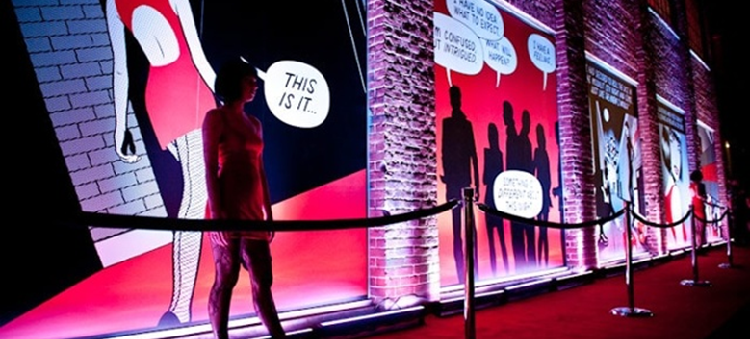
Source: Smirnoff
Smell
- Smells are considered the only sense that has a direct connection to the limbic system (the part of the brain which processes emotions).
- Studies have found lemon scents help to increase concentration, while lavender and orange scents have been used to calm patients in dental practices.
- Brands such as Abercrombie & Fitch use their own scents across all of their stores to influence their customers’ behaviour and purchasing habits. An employee at Abercrombie & Fitch said: 'By having low lights, a signature fragrance spritzed on the clothes, and maybe louder music than most stores, A&F sets itself apart from other clothing stores.' They said that the fragrance they use reminds their customers of their shopping experience long after their visit. The tactic was pushed to new limits in Ginza, Tokyo. When a new Abercrombie & Fitch flagship store opened there, even the streets were sprayed with the scent.
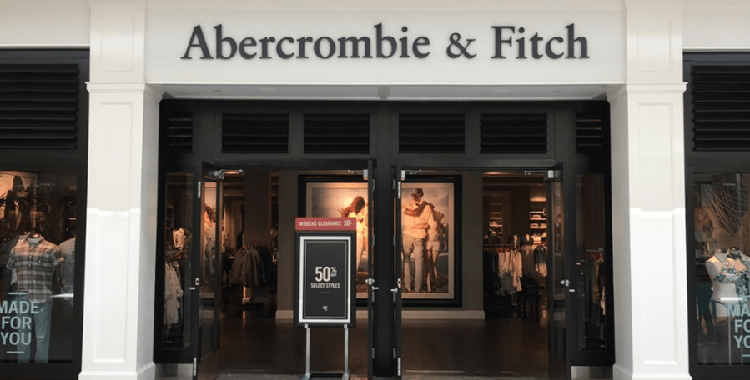
Source: Abercrombie & Fitch
Touch
- The quality and weight of materials can have a direct influence on our experiences; foods eaten from a silver spoon taste creamier than when they are being eaten with a plastic disposable spoon.
- The use of touch in experiential marketing has been used by many brands to create an immersive experience for their customers. To support the launch of a new hiking boot, the Capra, Merrell created a VR experience called Trailscape that took customers on a dangerous mountain hike. Participants were able to walk along a stage set that is mapped to the virtual experience to create a new level of immersion. The motion capture allowed adventurers to explore the mountainside, with tactile elements such as rope walkways and shaking wooden planks, making this one of the most immersive VR experience to date.
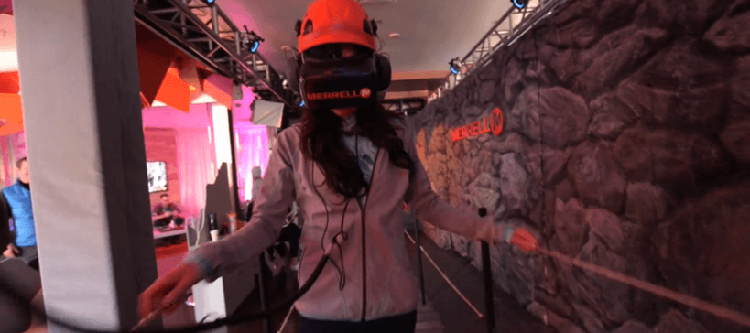
Source: Framestore Studio
Taste
- Taste can be influenced by other senses, for example sound. For example, playing music in the background while eating can alter your perceptions of the food.
- One of the most recognisable cookies in the world, Oreo, came up with the idea of combining Twitter, 3D printing and the classic Oreo cookie all into one experiential strategy. Users were able to receive a uniquely flavoured Oreo, based on the flavours trending on Twitter at that very moment. Mondelez International described the experience as “deliciously hyper-personalized and customized snacks based on real-time data collection.”

Source: Kalahari Meetings
Sound
- Like lighting, sound can influence mood by changing the pitch and tempo; with slower songs to calm and more energetic songs to excite and motivate.
- Many brands are now following the idea of ‘’off the plate’’ dining experiences, including Heston Blumenthal, who’s restaurant became famous for the Sound of the Sea dish with an accompanying iPod playing the sound of waves. Many restaurants have now adopted the idea of playing soundtracks that complement the dishes served.
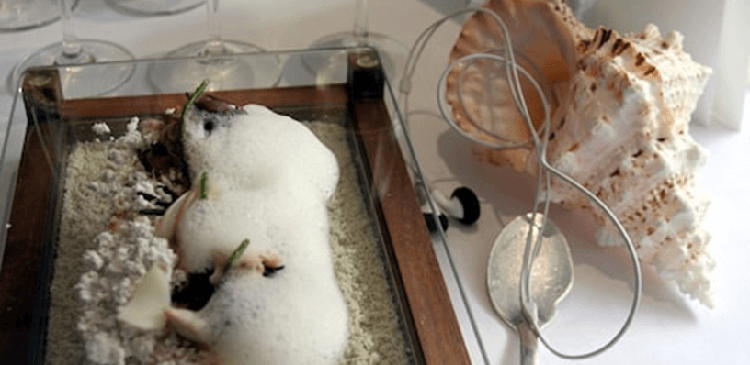
Source: The Telegraph
Experiential events at Christmas
Experiential events are helping to make more exciting festive events, both for brand events as well as Christmas parties. It is now more common to shun a regular office party and organise something more immersive and thrilling for guests.
Brands vary their level of experiential events at Christmas, from simple to complete immersion.
This year, Topshop is simply offering customers the chance to personalise their purchases with its in-store illustration and calligraphy service, in addition to complimentary manicures and makeovers.
Other brands have gone bigger, with Carlsberg constructing a beer tree, or TGI Fridays giving customers the chance to ski around Lapland with their VR headsets.
With all events, it’s important to have insurance to protect your business reputation, equipment and attendees. Many venues offer some level of cover, however it may not be sufficient for all the aspects included in your event. Find out more about protecting your reputation and public liability cover.
